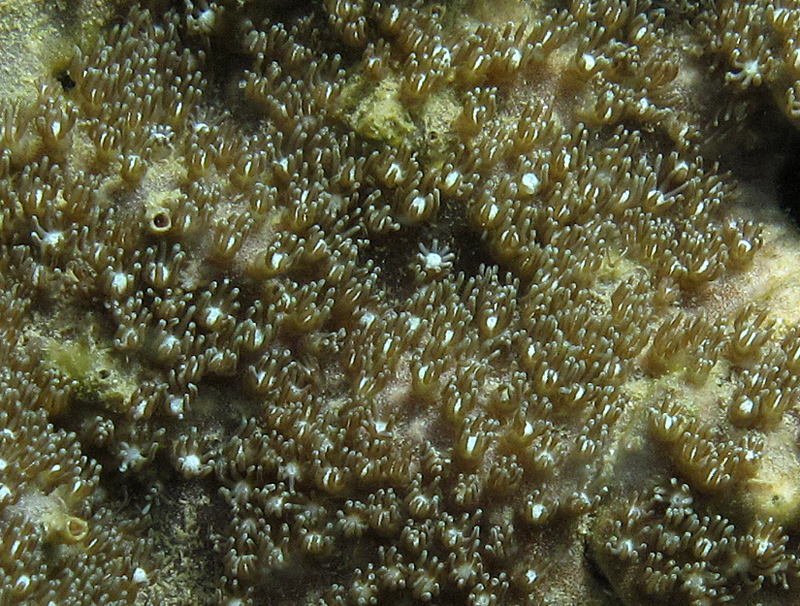
©Andy: A colony Briareum sp. at the lagoon entrance showing the typical magenta encrusting morphology. Polyps are retracted

©Andy: A colony of Briareum on an inshore fringing reef at Magnetic Island, showing a typical morphology
Distinguishing features
A group of species of soft coral with generally a thin encrusting morphology, with the colony surface often raised into protruding lumps. Polyps are monomorphic and retractile, with considerable variation in characteristics between species. In some specimens, polyps hardly protrude, while in others, polyps may be 15mm tall with a distinct oral disk. Colonies may be several meters in area, and mono-specific stands of Briareum sp. extending over many 10's of meters have been reported from some inshore reefs. Briareum sp(p). have variable densities of magenta coloured sclerites in the colony, which effects the overall colour. Colonies therefore range in colour from deep purple, to pinkish brown, to pale brown.
Size
- Size data has not been obtained.
Synonyms
Distribution and habitat preferences
Sheltered back reef and lagoonal habitats. Large encrusting specimens often found on windward reef flats and crests.
Can be found in most reef habitats around Lizard Island, although is more common in sheltered, turbid environments.
Behaviour
Briareum is well known for its high concentrations of toxic organic compounds including terpenes and cembranes, which deter predators and also inhibit settlement and competition from other benthic organisms.
Web resources
References
- Fabricius, K. and P. Alderslade (2001). in: Soft corals and sea fans: a comprehensive guide to the tropical shallow water genera of the central-west Pacific, the Indian Ocean and the Red Sea. Australian Institute of Marine Science, Townsville.
- Goulet, T.L., T.C. LaJeunesse and K.E. Fabricius (2008). Symbiont specificity and bleaching susceptibility among soft corals in the 1998 Great Barrier Reef mass coral bleaching event, Marine Biology, 154: 795-804.
- Hannes, A.R., M. Barbeitos and M.A. Coffroth (2009). Stability of symbiotic dinoflagellate type in the octocoral Briareum asbestinum, Marine Ecology Progress Series, 391: 65-72.
- View all references



